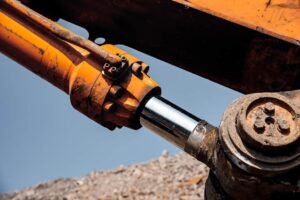Even then, there are certain points to consider when choosing a flow meter. With decades of practical experience supplemented with a globally installed base and constantly expanding, Siemens is at the top of its class in measuring the magmeter current. Excitation currents for electromagnetic flux meters can be quite large, up to 50 mA for smaller diameters up to 500 mA or 1 A for larger diameter pipes. The constant current circuit can consume a significant amount of energy and plate surface when regulated linearly. With the MJK MagFlux electromagnetic flux meter you measure the current in electrically conductive liquids in closed pressure piping systems with great precision. MagFlux measures the total precision at a fluctuation of 0.25% to a speed of 0.2 m / sec.
The design allows them to track liquids with very varied viscosities and densities. It is important that the meter is installed with the current direction corresponding to the arrow on the side of the meter if there is one. Due to their sensitivity to sound, electromagnetic flux meters must be installed online away from motors, transformers and electromagnetic fields. Magnetic đồng hồ nước điện tử flow meters use Faraday’s electromagnetic induction law to determine the fluid flow in a tube. In a magnetic flux meter, a magnetic field is generated and channeled into the liquid that flows through the tube. Under Faraday’s law, the flow of a conductive fluid through the magnetic field will cause the electrodes on the walls of the flow tube to detect a voltage signal.
Magnetic flux meters are used in water treatment plants to measure treated and untreated wastewater, process water, water and chemicals. Applications from the mining and mineral process industry include process water and process sludge flows and heavy media flows. Magnetic flux meters use Faraday’s Law or Electromagnetic Induction to determine the speed of a liquid flowing through a tube. Faraday’s law forms the basis of electrical generation systems in which cables travel through a magnetic field and produce a voltage. In magnetic flux meters, a magnetic field is generated and channeled into the liquid that flows through the tube. A magnetic flux meter or magnetic meter is a volumetric flux meter without moving parts and is ideal for waste water applications or other conductive dirty liquids.
Meter values are converted into flow capacity parameters and sent to a control system. Dairy products use flow meters to measure the amount of waste from dairy products, which must be regulated and controlled. An additional aspect of the flow is determining the amount of waste available for the production of fertilizers for preservation and reuse. Because magnetic flux meters are adaptive and adjustable, they can be installed in different locations in the waste pipe. The essential part of its function is to provide accurate and reliable data for determining the use of waste material.
Viscosity, temperature and liquids containing mud or grease do not affect meter readings. Every industry that deals with flows needs measuring equipment that specifically meets the needs of its operation. The same aphorism applies to the purchase of an electromagnetic flux meter. Full knowledge of the fluid to be measured is only part of the understanding of the general application. Some flow meter technologies are affected by liquid temperature and operating pressure. If the detection accuracy of a flow meter is affected by temperature, you may need a flow meter with built-in temperature compensation or you may need to add a temperature sensor.
As with other factors, magnetic flux meters are not affected by changes in flow. Whether the meter has a diameter of 0.125 inches or a foot of up to 10 cubic feet, you can measure all possible flow rates of a liquid. Very low or high flow rates do not affect the meter’s ability to perform and produce accurate data.
Gear meters use counter-synchronized oval rotors that interlock to rotate with the passing of liquid. The amount of liquid passing through the oval gears is well controlled, giving meters a high degree of precision. The designs are typically sturdy and simple, allowing installation in the most aggressive environments. In fact, gear meters are one of the few types that adapt to high viscosity liquids. Used in hydraulic systems and other applications with very viscous liquids, gear flow meters work well in the pulp and paper industry, fuel or oil transfer and production.
They are used to measure linear, non-linear, massive and volumetric flow rates…
The purple track is for the positive electrode and the red track is for the negative electrode. The pink path is the mathematical channel that subtracts positive and negative electrodes. A mass flow meter is a way of measuring the volume or mass of a gas or liquid passing through a system at a specific point in the flow system.
The same electromagnetic flux meter used for a 150 psi application may not work for a 300 psi application. Most specification blades of the electromagnetic flux meter indicate the specific pressure and temperature classification of the meter in question. Make sure that the meter you selected has specifications that meet the needs of your application.
